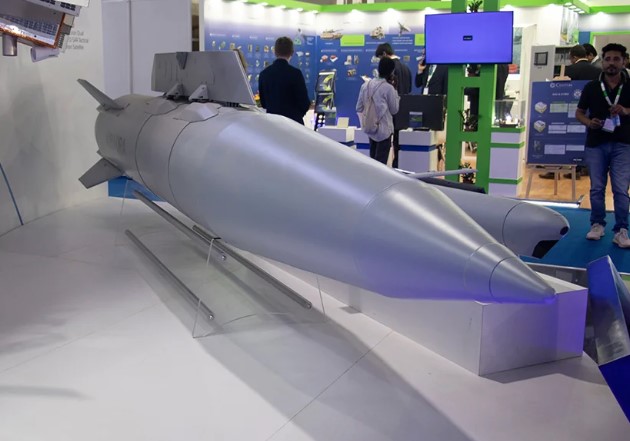IAF’s Bold Move for Extended-Range Supersonic Firepower
The Indian Air Force (IAF) is reportedly exploring a new missile system. It is considering the AIR LORA missile from Israel Aerospace Industries (IAI). This move follows a recent successful operation. During Operation Sindoor, the IAF used the Rampage missile. The mission targeted several air bases across the border. The success has led to interest in stronger strike options. While Rampage proved to be effective, it comes with certain limitations, especially in terms of range and deployment conditions.
In comparison, the AIR LORA (Long-Range Artillery) missile offers a much more powerful strike capability. It has an impressive range of up to 400 kilometers, allowing Indian fighter jets to hit enemy targets from a safe distance—beyond the reach of enemy air defense systems. This feature gives the IAF a deep stand-off capability, meaning it can hit high-value strategic targets without flying close to hostile zones.
AIR LORA belongs to IAI’s well-known LORA family of missiles. The military specifically designed it for launching from aircraft and classified it as a supersonic, massive, and precise weapon. It primarily destroys heavily guarded targets like air force bases, naval stations, military command centers, and important infrastructure sites.
Jet Loss Before Justice: IAF Handcuffed by Orders Not to Strike Pakistan Military Sites
The missile weighs around 1,600 kilograms at launch. It is compatible with fighter jets like the Su-30MKI. This aircraft is one of the main combat jets used by the IAF. Once launched, the missile travels at supersonic speeds. It can strike targets within minutes, making it perfect for quick, surprise attacks.
Fire-and-Forget: Autonomous Power and Battlefield Agility of LORA
One of the most important features of the AIR LORA missile is its fire-and-forget capability. This means the pilot or aircraft does not need to provide any further control or guidance once they launch the missile. The missile then operates fully autonomously, allowing the fighter jet to exit the area quickly and avoid exposure to enemy fire.
Even more impressive, AIR LORA can change its target mid-flight. If the battlefield situation changes or better target information becomes available after launch, the system redirects the missile accordingly. This level of mission flexibility makes it highly valuable for modern warfare where situations can evolve rapidly.
FATF Slams Pakistan Over Hidden Missile Shipments – Will India Push for Greylisting?
The missile uses GPS and INS (Inertial Navigation System) to navigate with high precision. Engineers also equipped it with anti-jamming technology, which means it can still find its target even if the enemy tries to block or interfere with its navigation systems. With a Circular Error Probable (CEP) of less than 10 meters, AIR LORA is capable of hitting its target with pinpoint accuracy, reducing the chances of hitting unintended objects or causing unnecessary damage.
Engineers designed AIR LORA with a seekerless architecture, which reduces the risk of detection by enemy radars. Its high-speed dive attacks and steep impact angles further improve its chances of avoiding interception by enemy air defenses. They also built it to function in all weather conditions, ensuring it performs effectively even during storms or in low-visibility environments.
Easy Integration and Warhead Variety Make LORA Mission-Ready
Another key advantage of the AIR LORA missile is that it can be easily integrated with different aircraft platforms. Whether the aircraft systems are of Western or Eastern origin, AIR LORA can work with both types of avionics. This flexibility allows the IAF to deploy the missile faster and avoids the need to make major changes to aircraft systems or pilot training routines. It also helps in cutting down on logistical challenges and setup time.
The missile supports both stand-alone operations and system-linked missions, depending on how it is set up. This allows it to adapt to a wide variety of combat missions. Whether the goal is to destroy a single high-value target or conduct coordinated strikes on multiple enemy assets, AIR LORA is ready for action.
To meet different battlefield needs, AIR LORA can be equipped with various types of warheads. These include:
- Blast fragmentation warheads for destroying surface targets,
- General-purpose warheads for multiple uses, and
- Deep-penetration warheads for hitting bunkers and underground facilities.
Chinese Watchdog Brands India-Israel Axis a Dangerous Threat to Peace
This range of options gives the IAF greater flexibility when selecting the best missile configuration for each mission.
By considering the acquisition of the AIR LORA missile, the Indian Air Force is looking to strengthen its deep-strike capabilities. The missile’s supersonic speed, precision accuracy, advanced navigation, and mission versatility make it a potent addition to India’s air power arsenal.

